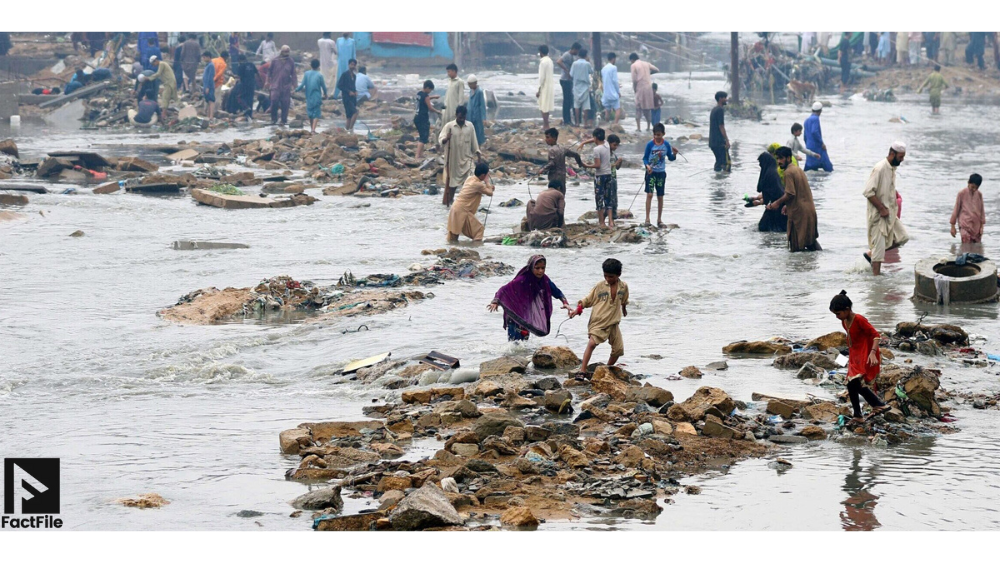Pakistan received a $188 million grant to improve weather forecasting systems and protect citizens from climate-driven disasters. However, instead of becoming a regional leader in climate preparedness, the country now faces rising floods, heatwaves, and storms with little warning. The failure to use the grant effectively highlights governance gaps, weak planning, and mismanagement.
A Grant That Promised Safety but Delivered Little
The grant was intended to modernize Pakistan’s weather forecasting infrastructure. Advanced radar systems, automated weather stations, satellite monitoring, and early warning networks were part of the original plan. If implemented, these measures could have reduced losses from floods and cyclones by giving timely alerts.
Unfortunately, much of the funding never translated into real improvements. Procurement delays, lack of technical expertise, and bureaucratic red tape slowed progress. By the time partial systems were installed, they were outdated or left non-functional due to poor maintenance.
Climate Disasters Continue to Expose Weaknesses
The devastating floods of 2022 and the recurring monsoon destruction in Punjab and Sindh showed how fragile Pakistan’s forecasting system remains. Citizens received warnings too late, and rescue operations suffered from lack of coordination. Despite international funding, Pakistan still depends on outdated manual methods to monitor weather patterns.
Experts argue that the failure lies not only in mismanagement but also in poor long-term planning. Weather forecasting requires consistent upgrades, staff training, and transparent data sharing between agencies. Instead, overlapping departments often compete rather than cooperate, weakening the entire system.
Governance Gaps and Institutional Mismanagement
Investigations show that multiple agencies were assigned roles without clear accountability. Funds were allocated to projects that never became operational, while contracts were given without competitive bidding. Reports suggest that expensive equipment remained unused in warehouses because technicians were not trained to operate it.
Instead of investing in local capacity-building, much of the grant was spent on importing technology without a sustainability plan. When foreign experts left, the systems became useless. This cycle of dependence has left Pakistan vulnerable despite having access to large-scale funding.
A Missed Opportunity for Regional Leadership
Pakistan is one of the most climate-vulnerable countries in the world. With proper use of the $188 million weather forecasting grant, it could have positioned itself as a model for South Asia in disaster preparedness. Neighboring countries like Bangladesh have successfully implemented early warning systems that save thousands of lives each year.
Pakistan’s failure stands in contrast. While Bangladesh issues timely flood warnings, Pakistan struggles to provide accurate updates even during peak disaster seasons. The missed opportunity reflects not just wasted money, but also lost credibility on the global stage.
ALSO READ: PDMA Issues Flood Alert in Punjab Over Sutlej River Flood Risk from August 13
Citizens Pay the Price
Ultimately, ordinary Pakistanis are the ones who suffer. Farmers lose crops because they receive no forecast about delayed rains. Urban populations face flash floods without early alerts. Families are forced to evacuate without knowing where to find safe shelters. Each disaster not only destroys lives and livelihoods but also deepens poverty.
Had the grant been used effectively, Pakistan could have reduced human and economic losses significantly. Studies show that every dollar spent on disaster preparedness can save up to six dollars in recovery costs. Pakistan, however, is spending billions each year on relief instead of prevention.
The Way Forward
Experts recommend urgent reforms to prevent further waste of resources. First, Pakistan needs a centralized authority responsible for all weather-related forecasting and disaster management. This body should be empowered, transparent, and accountable.
Second, local technical staff must be trained to run and maintain forecasting systems. Relying on external contractors leads to dependency and inefficiency. Third, real-time data must be made accessible to the public through mobile apps, SMS alerts, and regional broadcasts. Citizens should not have to depend on fragmented and delayed updates.
Finally, policymakers must ensure that future international funding is tied to strict performance indicators. Without measurable outcomes, Pakistan risks repeating the same mistakes.





